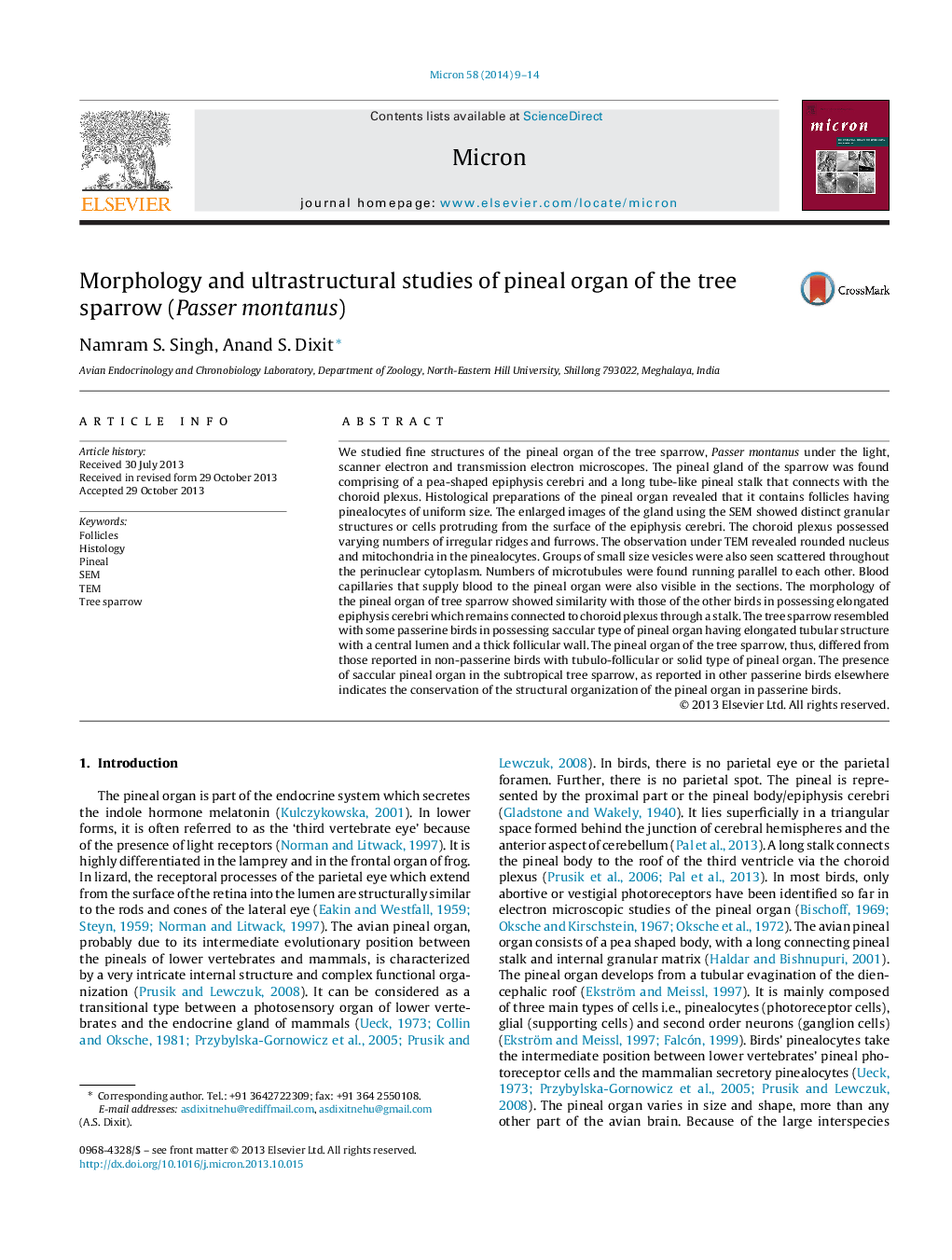| Article ID | Journal | Published Year | Pages | File Type |
|---|---|---|---|---|
| 1589077 | Micron | 2014 | 6 Pages |
Abstract
We studied fine structures of the pineal organ of the tree sparrow, Passer montanus under the light, scanner electron and transmission electron microscopes. The pineal gland of the sparrow was found comprising of a pea-shaped epiphysis cerebri and a long tube-like pineal stalk that connects with the choroid plexus. Histological preparations of the pineal organ revealed that it contains follicles having pinealocytes of uniform size. The enlarged images of the gland using the SEM showed distinct granular structures or cells protruding from the surface of the epiphysis cerebri. The choroid plexus possessed varying numbers of irregular ridges and furrows. The observation under TEM revealed rounded nucleus and mitochondria in the pinealocytes. Groups of small size vesicles were also seen scattered throughout the perinuclear cytoplasm. Numbers of microtubules were found running parallel to each other. Blood capillaries that supply blood to the pineal organ were also visible in the sections. The morphology of the pineal organ of tree sparrow showed similarity with those of the other birds in possessing elongated epiphysis cerebri which remains connected to choroid plexus through a stalk. The tree sparrow resembled with some passerine birds in possessing saccular type of pineal organ having elongated tubular structure with a central lumen and a thick follicular wall. The pineal organ of the tree sparrow, thus, differed from those reported in non-passerine birds with tubulo-follicular or solid type of pineal organ. The presence of saccular pineal organ in the subtropical tree sparrow, as reported in other passerine birds elsewhere indicates the conservation of the structural organization of the pineal organ in passerine birds.
Related Topics
Physical Sciences and Engineering
Materials Science
Materials Science (General)
Authors
Namram S. Singh, Anand S. Dixit,
